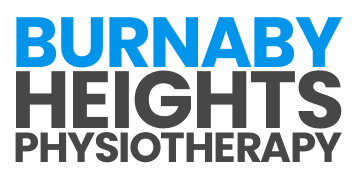
Alleviating Neck Pain with Physiotherapy: What You Need to Know
July 24, 2024
Targeted Treatment and Recovery: How Physiotherapy Helps Tennis Elbow
August 27, 2024Frozen shoulder is a condition characterized by stiffness, pain, and limited range of motion in the shoulder joint. It can significantly impact your ability to perform daily activities and affect your overall quality of life. Fortunately, physiotherapy offers viable treatments to manage and recover from frozen shoulder. In this blog post, we’ll explore what frozen shoulder is, how physiotherapy can help, the specific techniques used in treatment, and home exercises that can complement your recovery.
What Is Frozen Shoulder?
Frozen shoulder, also known as adhesive capsulitis, is a condition that results in pain, stiffness, and a significant reduction in the range of motion in the shoulder joint. This condition typically develops gradually and can progress through distinct stages over time. Initially, individuals may notice a slow onset of pain that worsens over time, leading to increasing difficulty in moving the shoulder. As the condition progresses, the shoulder can become so stiff that it limits daily activities, such as reaching overhead or behind the back.
The exact cause of frozen shoulder is not always clear, but it is often associated with a history of shoulder injury, surgery, or periods of immobility, such as wearing a sling after an injury. Certain medical conditions, such as diabetes or thyroid disorders, can also increase the risk of developing frozen shoulder.
The condition progresses through three stages: the freezing stage, where pain and stiffness gradually increase; the frozen stage, where stiffness is more pronounced and pain may lessen; and the thawing stage, where the range of motion slowly begins to improve.
Without proper treatment, frozen shoulder can lead to long-term disability and persistent pain, making early intervention crucial. Physiotherapy is often recommended to help manage the symptoms and restore movement to the shoulder.
How Does Physiotherapy Help in the Treatment of Frozen Shoulder?
Physiotherapy is a highly effective treatment for frozen shoulder, offering a non-invasive approach that focuses on relieving pain, restoring mobility, and preventing the progression of the condition. Here’s how physiotherapy can help:
- Pain Relief: Physiotherapy techniques such as manual therapy, soft tissue massage, and modalities like heat or cold therapy are used to alleviate pain and reduce inflammation in the shoulder joint. Pain relief is often the first step in the treatment process, as it allows for more effective mobilization and exercise.
- Restoring Range of Motion: One of the primary goals of physiotherapy for frozen shoulder is to restore the range of motion in the shoulder joint. Physiotherapists use a combination of passive and active stretching exercises to improve flexibility and gradually increase the shoulder’s mobility.
- Strengthening Muscles: As the shoulder begins to thaw and the range of motion improves, physiotherapy focuses on strengthening the muscles around the shoulder joint. This helps to stabilize the joint, reduce the risk of re-injury, and improve overall shoulder function.
- Preventing Recurrence: Physiotherapy not only treats the current symptoms of frozen shoulder but also helps prevent the condition from recurring. Through education on proper posture, movement techniques, and home exercises, physiotherapists equip clients with the tools they need to maintain shoulder health in the long term.
By addressing these key areas, physiotherapy provides a comprehensive approach to managing frozen shoulder, leading to a quicker and more effective recovery.
Physiotherapy Techniques Used for Frozen Shoulder
Physiotherapy for frozen shoulder involves a range of techniques designed to reduce pain, improve mobility, and restore function. Here are some of the specific techniques that may be used:
- Manual Therapy: Manual therapy includes hands-on techniques such as joint mobilization, soft tissue massage, and stretching. These techniques help to release tension in the shoulder joint, improve circulation, and increase the range of motion. Manual therapy is often used in combination with other treatments to enhance their effectiveness.
- Shockwave Therapy: Shockwave therapy is an advanced treatment option that uses acoustic waves to stimulate healing in the affected area. This technique can be particularly effective for breaking up scar tissue and adhesions in the shoulder joint, which are common in frozen shoulder. Shockwave therapy helps to reduce pain, improve blood flow, and accelerate the healing process.
- Acupuncture: Acupuncture is a traditional Chinese medicine technique that involves inserting fine needles into specific points on the body. For frozen shoulder, acupuncture can help to relieve pain, reduce inflammation, and promote relaxation in the affected muscles. Acupuncture is often used as a complementary treatment to enhance the effects of physiotherapy.
- Corrective Exercises: Corrective exercises are designed to address the specific muscle imbalances and movement patterns that contribute to frozen shoulder. These exercises may include stretching, strengthening, and range-of-motion activities that are tailored to the individual’s needs. Regularly performing these exercises helps to improve shoulder function and prevent further complications.
- Client Education: An essential aspect of physiotherapy is educating clients about their condition and the best ways to manage it. This includes teaching proper posture, movement techniques, and strategies to avoid activities that could worsen the condition. By understanding their condition and how to manage it, clients can take an active role in their recovery and prevent the recurrence of frozen shoulder.
Complementing Physiotherapy: Exercises for Frozen Shoulder
In addition to in-clinic physiotherapy sessions, performing specific exercises at home can significantly enhance your recovery from frozen shoulder. Here are some exercises that are commonly recommended by physiotherapists:
- Pendulum Stretch: Stand with your unaffected hand on a table or chair for support. Let your affected arm hang down, and gently swing it in small circles, gradually increasing the size of the circles. Perform this exercise for 30 seconds to 1 minute. The pendulum stretch helps to gently mobilize the shoulder joint and reduce stiffness.
- Towel Stretch: Hold a towel behind your back with one hand at the top and the other hand at the bottom. Gently pull the towel upward with the top hand to stretch the affected shoulder. Hold the stretch for 15-30 seconds, then relax. Repeat 2-3 times. This exercise helps to improve the flexibility and range of motion in the shoulder.
- Cross-Body Stretch: Use your unaffected arm to gently pull your affected arm across your chest, keeping the elbow straight. Hold the stretch for 15-30 seconds, then relax. Repeat 2-3 times. The cross-body stretch helps to relieve tension in the shoulder muscles and improve mobility.
- Wall Climbing: Stand facing a wall with your affected arm at your side. Slowly walk your fingers up the wall as far as you can comfortably reach, then walk them back down. Perform 2-3 repetitions. Wall climbing helps to increase the range of motion and strength in the shoulder.
- External Rotation: Hold a resistance band with both hands, keeping your elbows bent at a 90-degree angle and close to your sides. Gently pull the band apart by rotating your forearms outward, then slowly return to the starting position. Repeat 10-15 times. This exercise strengthens the muscles that support the shoulder joint.
These exercises should be performed regularly, as part of your home exercise program, to complement your physiotherapy treatment and promote a faster recovery.
Is Physiotherapy for Frozen Shoulder Painful?
Physiotherapy for frozen shoulder may involve some discomfort, especially in the early stages when pain and stiffness are most severe. However, a skilled physiotherapist will ensure that treatments are within your pain tolerance and will focus on gradually reducing discomfort while improving mobility. Techniques such as soft tissue massage, passive stretching, and gentle mobilization are used to manage pain effectively.
It’s important to communicate openly with your physiotherapist about any discomfort you experience so that the treatment can be adjusted accordingly. The overall goal is to relieve pain and restore function, making physiotherapy a beneficial and manageable part of your recovery process.
Lifestyle Adjustments to Support Frozen Shoulder Treatment
Making certain lifestyle adjustments can significantly enhance the effectiveness of your treatment for frozen shoulder. These changes can help manage symptoms, prevent further stiffness, and support overall recovery. Here are some key adjustments to consider:
- Stay Active: While it’s important not to overstrain your shoulder, maintaining gentle activity is crucial. Engage in low-impact exercises that keep your shoulder moving, such as walking or light swimming. Regular movement helps prevent the joint from becoming too stiff and aids in maintaining flexibility.
- Incorporate Regular Stretching: Gentle stretching exercises, as recommended by your physiotherapist, should be part of your daily routine. These stretches help maintain range of motion and reduce stiffness. Consistent stretching can complement your physiotherapy sessions by promoting gradual improvement in shoulder mobility.
- Prioritize Good Posture: Poor posture can exacerbate shoulder problems and contribute to the development of frozen shoulder. Focus on maintaining proper posture throughout the day, whether you’re sitting, standing, or working at a desk. This reduces unnecessary strain on your shoulder joint and supports the healing process.
- Manage Stress: Stress can contribute to muscle tension, which may worsen shoulder pain and stiffness. Incorporate stress-relief techniques such as deep breathing exercises, meditation, or yoga into your daily routine. Reducing stress can help alleviate muscle tension and support overall well-being during recovery.
- Apply Heat Therapy: Applying heat to the affected shoulder can help relax tight muscles and improve blood flow to the area. Use a warm towel or heating pad for short periods, particularly before stretching or exercise, to help loosen the shoulder and reduce discomfort.
- Avoid Overuse and Heavy Lifting: While staying active is important, it’s equally crucial to avoid activities that could strain or overuse your shoulder. Avoid heavy lifting or repetitive overhead movements that could aggravate your symptoms. Instead, focus on movements that are within your pain-free range.
- Modify Sleeping Position: Sleeping with the affected shoulder in a comfortable position can help reduce pain during the night. Try sleeping on your back with a pillow under your arm to support the shoulder or on your unaffected side with the affected arm supported by a pillow.
How Often Should I Attend Physiotherapy Sessions for Frozen Shoulder?
The frequency of physiotherapy sessions for frozen shoulder varies based on the severity of your condition and your stage of recovery. In the early stages, when pain and stiffness are at their worst, you may need to attend sessions 2 to 3 times per week to manage symptoms and maintain mobility. As your condition progresses and mobility begins to improve, the frequency may decrease to 1 to 2 times per week. In the final stages, when mobility is returning, sessions might be spaced out further, possibly once a week or less, focusing on restoring full range of motion and strength.
Alongside in-clinic sessions, adhering to a home exercise program is crucial for continuous progress. Even after formal treatment ends, occasional check-ins with your physiotherapist can help maintain your recovery and prevent a recurrence. The exact schedule will be personalized to your needs, ensuring a balanced approach that maximizes recovery.
Enhanced Mobility and Pain Relief
Frozen shoulder is a challenging condition, but with the right approach to physiotherapy and lifestyle management, recovery is achievable. Understanding the potential discomfort associated with treatment, the recommended frequency of physiotherapy sessions, and the lifestyle factors that contribute to the development of frozen shoulder can help you take an active role in your recovery.If you’re dealing with frozen shoulder, Burnaby Heights Physiotherapy is here to provide care and support. Our physiotherapists are experienced in treating frozen shoulder and are committed to helping you regain your mobility and improve your quality of life. Contact us today to schedule your appointment and say goodbye to pain!






